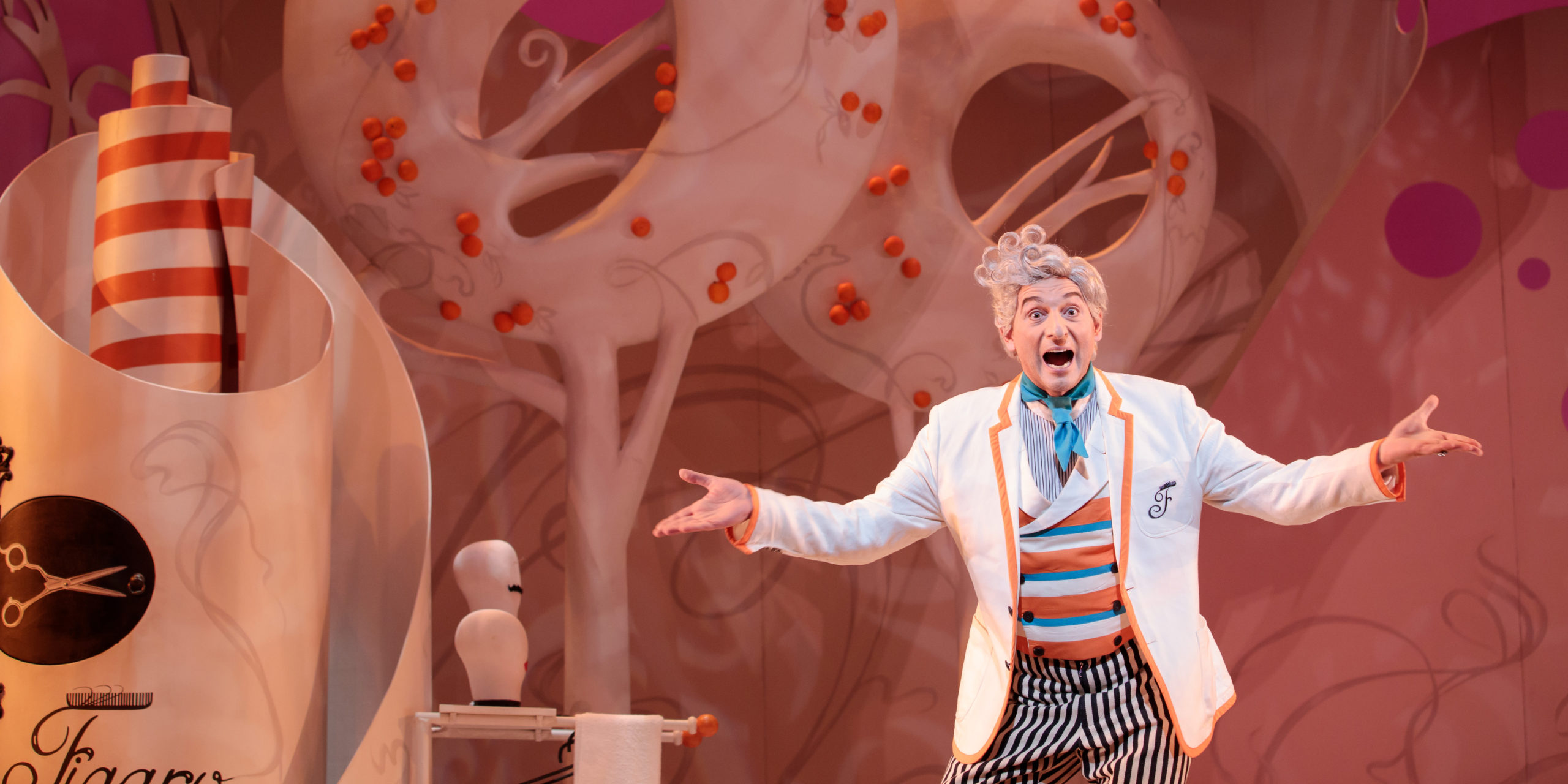Opera Seria and Opera Buffa Continued to Be Performed in Italy During the Nineteenth Century
What Is Opera Buffa?

By: Suzanne Whitney
Opera can be an intimidating genre of music. The performances are long, often sung in a foreign language, and there are so many different terms to learn and remember! Well, we are here to clear things up and make this fabulous artform a little more approachable. Today, we are explaining the term "Opera Buffa."
Definition Please
Can you use opera buffa in a sentence?
"Opera buffa is my favorite genre of opera!"
"When I need a good laugh, I can always count on an opera buffa."
Even if you don't know the definition, you may be able to figure this one out on your own. In Italian, "Buffa" means to jest or joke and is the root for the English word buffoon . If we trace the etymology all the way back, they come from the Italian word buffare, meaning to puff out your cheeks—a gesture often performed by comic actors or jesters. So, if we put opera and jest together, what do we get? A comic opera. There it is, simply put, opera buffa is a comic opera. That being said, there are some specifics and a history of how Opera Buffa came to be.
What Is The History of Opera Buffa?
When thinking about theater and live performance, the classic image of the comedy and tragedy masks often comes to mind. While it may seem like an even split between comedy and tragedy, the origins of Italian opera fall squarely on the side of tragedy. Many early operas and musical plays told tragic or sacred stories. These performances eventually developed into a codified genre called opera seria (more on this genre soon).
While a great tragedy can sweep you away, the composers and performers of seventeenth-century Italy found their courtly audiences enjoyed a bit of silliness mixed in with their star-crossed lovers, interfering gods, and heroic martyrs. So, they began including short, comedic performances called "intermezzi" between the acts of the grand tragic opera seria. Soon audiences wanted more of the comedy to the point where these comedic intermezzi were performed on their own.
One of the first intermezzi to stand on its own, and to stand the test of time, is Giovanni Battista Pergolesi's La serva padrona . This one-act is still performed regularly, especially by companies that specialize in early opera . La serva padrona ( The Maid Turned Mistress ) is an excellent example of a work connecting the early comedic intermezzi to the fully-formed genre of opera buffa, which was just around the corner.
Unlike opera seria, which told stories of gods and grand heroes, intermezzi and opera buffa told stories about domestic life. La serva padrona tells the story of a maid who tricks her employer into marrying her. Despite her cunning tactics involving disguises and lots of half-truths, it all ends with the happy realization the two were in love the whole time. These plot elements will appear in opera buffa throughout the centuries.
These plot elements and the musical elements used to characterize each role trace a clear lineage from La serva padrona to later works within the opera buffa genre like Mozart's The Marriage of Figaro (1786), Rossini's The Barber of Seville (1816), to Donizetti's Elixir of Love (1832), and even to Donizetti's Don Pasquale (1843).
While the genre held less prominence as we moved into the Romantic period, the operas composed within the opera buffa style continue to be some of the most loved and performed operas to this day. Audiences have never gotten over the joy found in a farce filled with mistaken identities, all ending happily ever after.
Extra Credit
If you need all the details, here are a few other terms connected to opera buffa and some resources to learn even more!
Aria buffa – A funny aria. Learn more about arias here>>
Basso buffo – A specific voice type featured in opera buffa. Unlike opera seria, which used castrati and other high voices, opera buffa highlighted lower voices in comedic roles. This voice type often is featured in a "patter aria." These are comedic solos with more words than you can imagine! Hence the name, patter aria. Enjoy an example of a patter aria from our 2019 production of The Barber of Seville . You know the one… Figaro, Figaro, FIIII-GAH-RO!
Information in this article was taken from the following resources. We encourage you to check out these books if you want to learn even more!
A History of Opera by Carolyn Abbate and Roger Parker
The Rough Guide to Opera by Matthew Boyden
A Short History of Opera by Donald Grout
A Night at the Opera by Denis Forman
—
What is your favorite opera buffa? Is there an opera genre you want to know more about? What is another opera term you need explained?
Source: https://www.operacolorado.org/blog/what-is-opera-buffa/